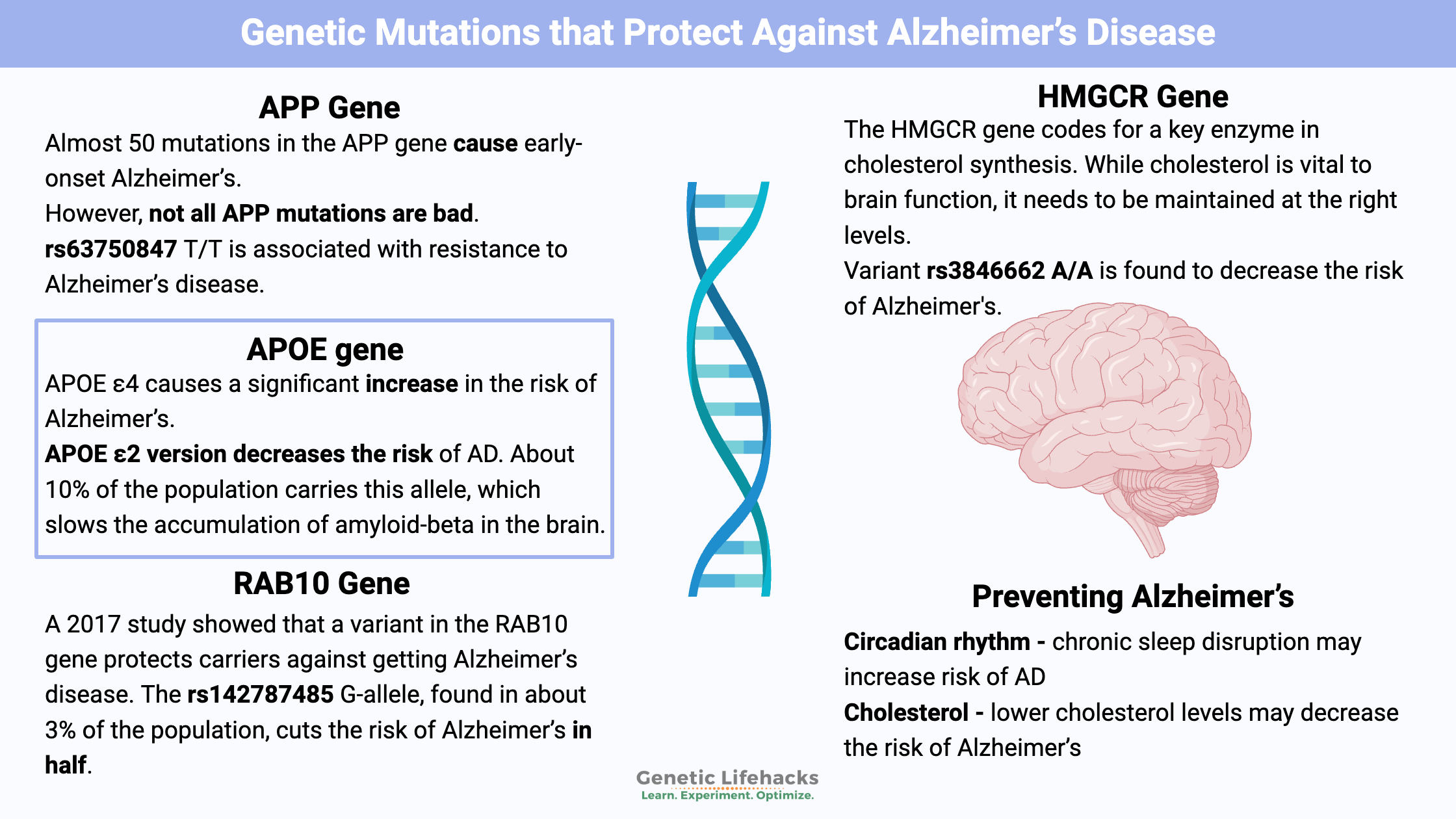Key takeaways:
~ Alzheimer’s disease is a scary possibility that faces many of us today — whether for ourselves or for aging parents or grandparents.
~ Genetic variants can increase – or – decrease your risk for Alzheimer’s disease. This article focuses on the variants and rare mutations that protect against Alzheimer’s.
~ Understanding the pathways that are impacted by protective variants can help us understand possible prevention methods.
Genetic variants that protect against Alzheimer’s disease:
Currently, 10% of people age 65 or older have Alzheimer’s disease (AD), and the risk for Alzheimer’s disease increases considerably with age. It is a disease for which prevention needs to start decades before the symptoms appear.[ref]
One way to understand your Alzheimer’s risk – and to understand the mechanisms by which the disease occurs – is to look at genetic variants that increase the risk for Alzheimer’s. On the other hand, you can also learn a lot by looking at genetic variants that protect against Alzheimer’s.
Genes combine with environmental exposure and lifestyle to determine your risk for Alzheimer’s disease. There are genetic variants that increase your risk for Alzheimer’s disease. Other variants decrease your risk for the disease.
This article focuses on the protective side of the equation, something many people worry about AD fails to consider.
Even if you don’t carry the protective variants below, a lot can be gleaned from understanding how the variants work and why they decrease the risk of Alzheimer’s. This seems to be a relatively new field of research, but it is interesting to note that several of these protective genetic variants are involved in either cholesterol or lipid metabolism in the brain.
Most Alzheimer’s research focuses on the accumulation of amyloid-β plaque and the tangled tau fibrils. These proteins lead to the death of neurons in the brain. Unfortunately, thirty-plus years of research and clinical drug trials on amyloid-β have shown very few positive results.
Amyloid-β is a protein formed when enzymes cut the APP (amyloid precursor protein) protein into smaller fragments. Some of the protein fragments move out of the brain. But amyloid-β that isn’t cleared can build up around neurons, forming plaque.
Alzheimer’s Protection Genotype Report:
Lifehacks for preventing Alzheimer’s:
There are currently no medications for curing Alzheimer’s disease, and research shows that preventative actions need to start decades before the onset of the disease.
Download my free eBook on Alzheimer’s prevention
Related Articles and Topics:
NAD+
Explore the research about how nicotinamide riboside (NR) and NMN are being used to reverse aging. Learn about how your genes naturally affect your NAD+ levels, and how this interacts with the aging process.
Preventing Alzheimer’s
Billions of dollars have been spent in the last couple of decades has been spent on trying to find drugs to stop the tangled accumulation of beta-amyloid plaque without much success. A new direction of research is looking into the ties between circadian rhythm dysfunction and Alzheimer’s disease.
A Klotho Gene Variant Reduces Alzheimer’s Risk for APOE E4 Carriers
The Klotho protein is involved in many of the diseases of aging. Learn more about this gene and find out how your Klotho variants may impact healthy aging.
Serotonin 2A receptor: Psychedelic response and Alzheimer’s disease
Learn how new research on brain aging and dementia connects the serotonin 2A receptor with psychedelics, brain aging, and Alzheimer’s.

